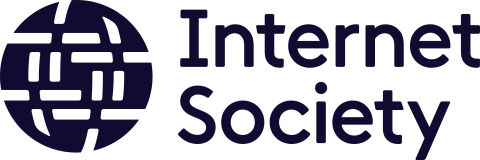Internet Society Launches First Ever Toolkit to Gauge the Impact of Regulation on the Internet
Internet Society Launches First Ever Toolkit to Gauge the Impact of Regulation on the Internet
- Internet Impact Assessment Toolkit to help policymakers, technologists and Internet users protect the foundation that underpins the Internet
WASHINGTON--(BUSINESS WIRE)--The Internet Society, a global nonprofit organization that promotes the development and use of an open, globally connected, and secure Internet has launched the first-ever regulatory assessment toolkit that defines the critical properties needed to protect and enhance the future of the Internet.
Up until this point, there has been no tool to assess how proposed regulation and technology trends affect the Internet’s architecture. The Internet Impact Assessment Toolkit is based on the newly-published paper, Internet Way of Networking (IWN): Defining the Critical Properties of the Internet, that explains how the Internet’s unique foundation is responsible for its strength and success. It also identifies the critical properties that must be protected to enable the Internet to reach its full potential.
From the news of Belarus cutting off civilian access to parts of the Internet during protests over the disputed election, to the Trump administration introducing the ‘Clean Network program’ and banning Chinese apps, TikTok and WeChat, a raft of proposals to control the Internet has left it at increasing risk of becoming the “Splinternet,” a less resilient, efficient, dynamic and open network.
The Internet Impact Assessment Toolkit is a guide to help ensure regulation, technology trends and decisions don’t harm the infrastructure of the Internet. It describes the Internet at its optimal state - a network of networks that is universally accessible, decentralized and open; facilitating the free and efficient flow of knowledge, ideas and information.
The five critical properties identified by the IWN are:
- An Accessible Infrastructure with a Common Protocol - A ‘common language’ enabling global connectivity and unrestricted access to the Internet
- An Open Architecture of Interoperable and Reusable Building Blocks - Open infrastructure with a set of standards enabling permission-free innovation
- Decentralized Management and a Single Distributed Routing System - Distributed routing enabling local networks to grow, while maintaining worldwide connectivity
- Common Global Identifiers - A single common identifier allowing computers and devices around the world to communicate with each other
- A Technology Neutral, General-purpose Network – A simple and adaptable dynamic environment cultivating infinite opportunities for innovation
When combined, these properties form the unique foundation that underpins the Internet’s success and are essential for its healthy evolution. The closer the Internet aligns with the IWN, the more open and agile it is for future innovation and the broader benefits of collaboration, resiliency, global reach and economic growth.
“The Internet’s ability to support the world through a global pandemic is an example of the Internet Way of Networking at its finest,” explains Joseph Lorenzo Hall, Senior Vice President for a Strong Internet, Internet Society. “Governments didn’t need to do anything to facilitate this massive global pivot in how humanity works, learns and socializes. The Internet just works – and it works thanks to the principles that underpin its success.”
The Internet Impact Assessment Toolkit will serve as an important resource to help policymakers and technologists ensure trends in regulatory and technical proposals don’t harm the unique architecture of the Internet. The toolkit explains why each property of the IWN is crucial to the Internet and the social and economic consequences that can arise when any of these properties are damaged.
For instance, the Toolkit shows how China’s restrictive networking model severely impacts its global reach and hinders collaboration with networks beyond its borders. It also highlights how the US administration’s Clean Network proposal challenges the Internet’s architecture by dictating how networks interconnect according to political considerations rather than technical considerations.
“We’re seeing a trend of governments encroaching on parts of the Internet’s infrastructure to try and solve social and political problems through technical means. Ill-informed regulation can drastically alter the Internet’s fundamental architecture and harm the ecosystem that supports it,” continues Hall. “We’re giving both policymakers and Internet users the information and tools to make sure they don’t break this resource that brings connectivity, innovation, and empowerment to everyone.”
Notes to editors
The Internet Way of Networking: Defining the Critical Properties of the Internet and the Internet Impact Assessment Toolkit are available to view here.
About the Internet Society
Founded in 1992 by Internet pioneers, the Internet Society (ISOC) is a global non-profit organization working to ensure the Internet remains a force for good for everyone. Through its community of members, special interest groups, and 120+ chapters around the world, the organization defends and promotes Internet policies, standards, and protocols that keep the Internet open, globally connected, and secure. For more information, please visit: internetsociety.org.
Contacts
Allesandra deSantillana
Internet Society
desantillana@isoc.org
